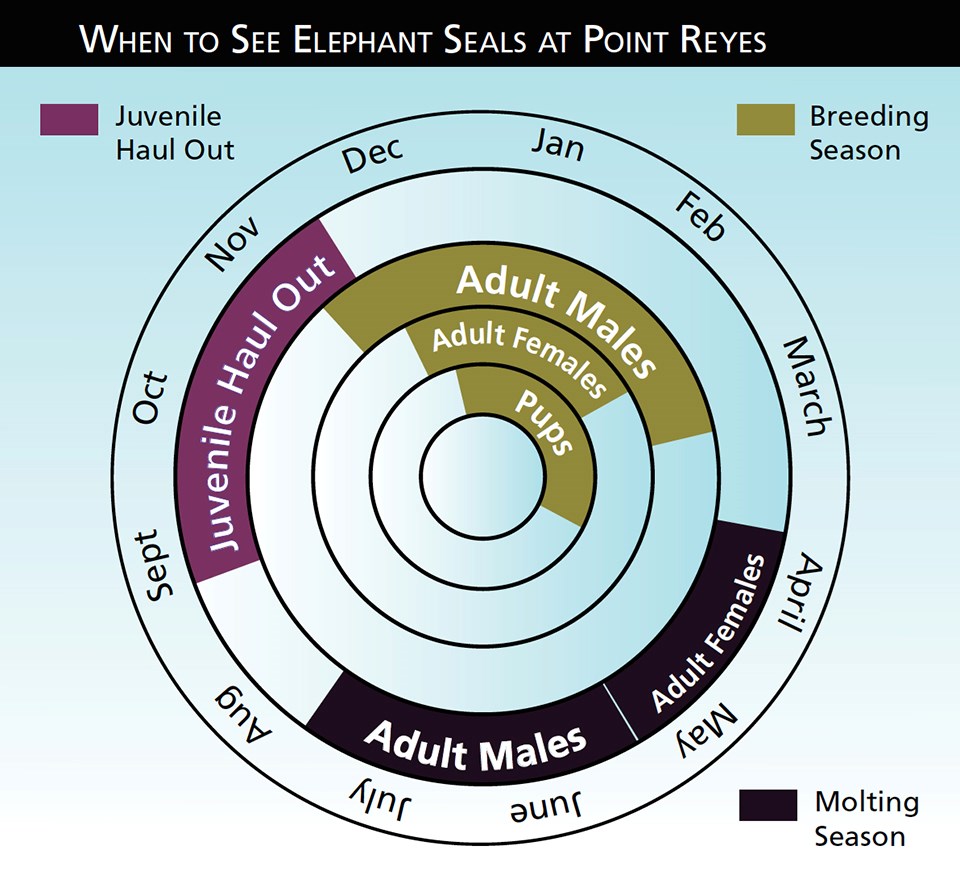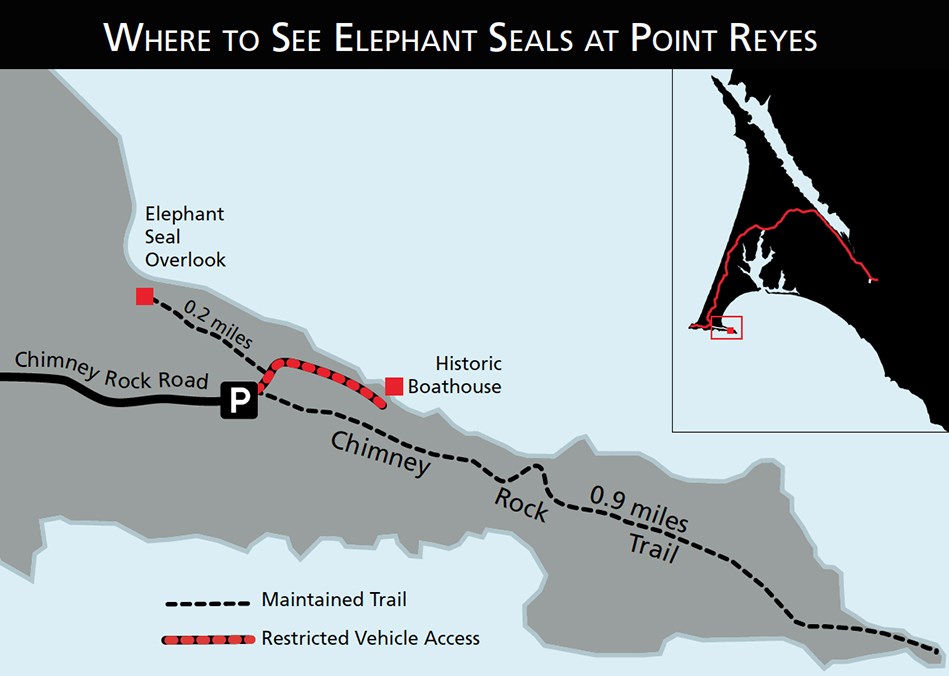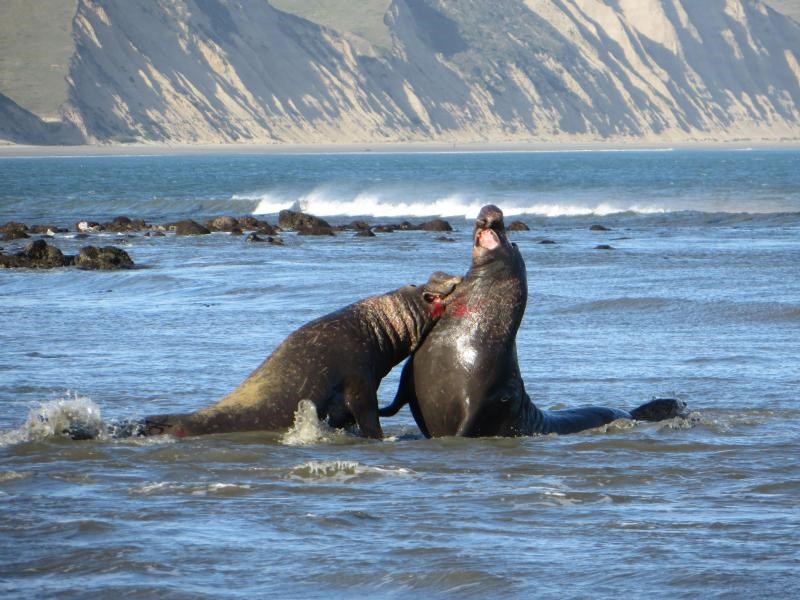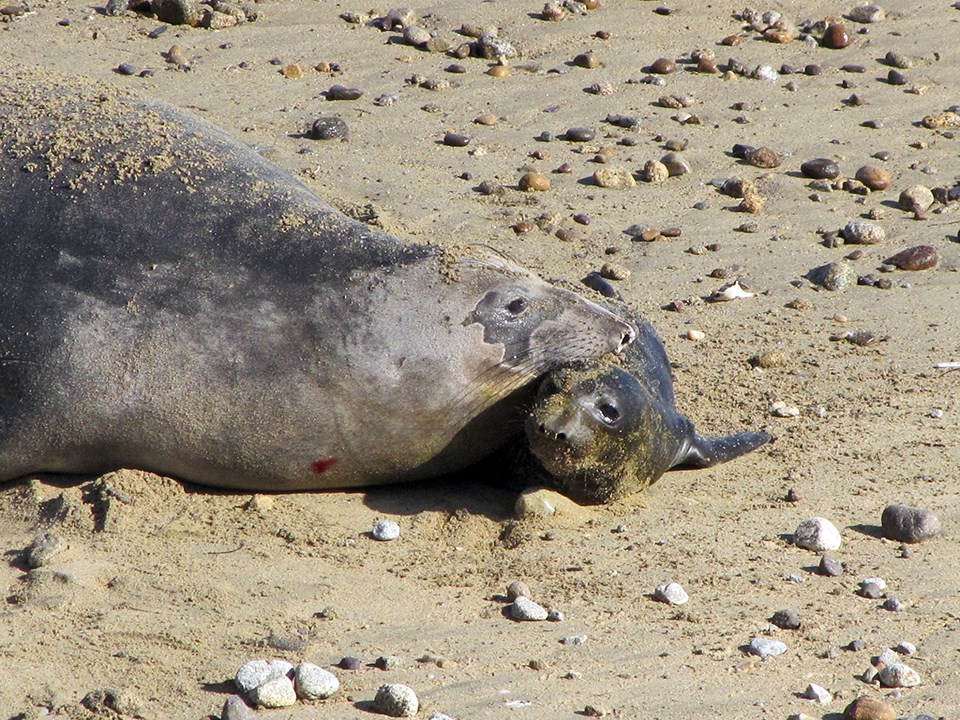Last updated: September 13, 2021
Article
Where and When to See Elephant Seals at Point Reyes

NPS / Heather Jensen
Elephant seals visit Point Reyes beaches throughout the year. Breeding and pupping season is in the winter, molting occurs in segregated groups in spring and summer, and the juveniles show up in the fall. The best place to see elephant seals in the park is at Chimney Rock, which is a 45-minute drive from the Bear Valley Visitor Center (see map). It’s a short walk from the Chimney Rock parking lot to the Elephant Seal Overlook. On winter weekends, you will find winter wildlife docents with spotting scopes there to help you spot the seals and discuss their behaviors.
It makes sense to combine your elephant seal discovery with a walk along the Chimney Rock Trail. It’s only 1.8 miles round trip, and the views are stunning. In March and April, as the adult elephant seal population thins out and the pups are left behind, the Chimney Rock wildflower bloom begins! This is also a great time to visit the Point Reyes Lighthouse and look for Pacific gray whales on their northern migration.
Note that some sections of beach may be closed to protect elephant seals in Point Reyes during the pupping season when they are exceptionally vulnerable to disturbance.


Molting Season
Elephant seals undergo a “radical molt," unlike other mammals, they lose all their fur at once and grow a completely new coat. Their fur provides some insulation from the cold Pacific waters, so they remain on the beach during this month-long process. The pups molt in March and April before going to sea for the first time. Females and juveniles molt in April and May, and adult males in July and August. In the fall the juveniles return for a pre-breeding season haul out.
Breeding Season
January is when most of the pups are born. At birth, they are only 3–4 feet long (1–1.3 m) and weigh a mere 60 pounds (27 kg). Western gulls and other scavengers often show up to clean up the afterbirth. In 33 days, the pups are weaned, at which time the females mate before heading back out to sea. After spending the breeding season fasting on the beach, the females need to hunt for food to replenish their dwindling stores of fat and muscle. Pups learn to swim on their own, gradually venturing out as they become hungry. Biologists tag pups born on Point Reyes beaches after they are weaned and have separated from their mothers. Point Reyes tags are pink and have a discrete number for each individual. When these seals turn up on other beaches, researchers can look up information about the seal. Pups born at Point Reyes have been seen in Canada, Alaska, and Russia!
In February, there's lots of activity. While some mothers are still nursing, the dominant bulls “face off” to defend their harems, both on the beach and out in the surf. They align their head and body at their rivals, rear up to display their chest shields, raise their heads, and “trumpet.” This sound often scares off other bulls, but a chase may ensue to drive the intruder off the beach.

© Jane Khudyakov
Viewing Tips
Groups of elephant seals are a spectacular sight, but please keep at least 100 feet away from all marine mammals. Bulls may be triggered to fight each other when humans approach, separating a female from her pup or even crushing a pup. Seals have been known to bite or chase people when surprised or approached too closely. Even on a leash, dogs may threaten seals by barking, so please refrain from taking your pets to areas where seals may be present. Winter and early spring are wonderful times at the seashore. Each year the elephant seal population continues to grow. It’s up to us and future generations to educate ourselves about the obstacles they face, so we can help ensure their continued survival.

NPS
Additional Resources
Contact Information
Links
Point Reyes Viewing Guidelines
San Francisco Bay Area Inventory & Monitoring Network
Pacific Coast Science & Learning Center
Elephant Seal Monitoring at Point Reyes National Seashore
Point Reyes National Seashore
